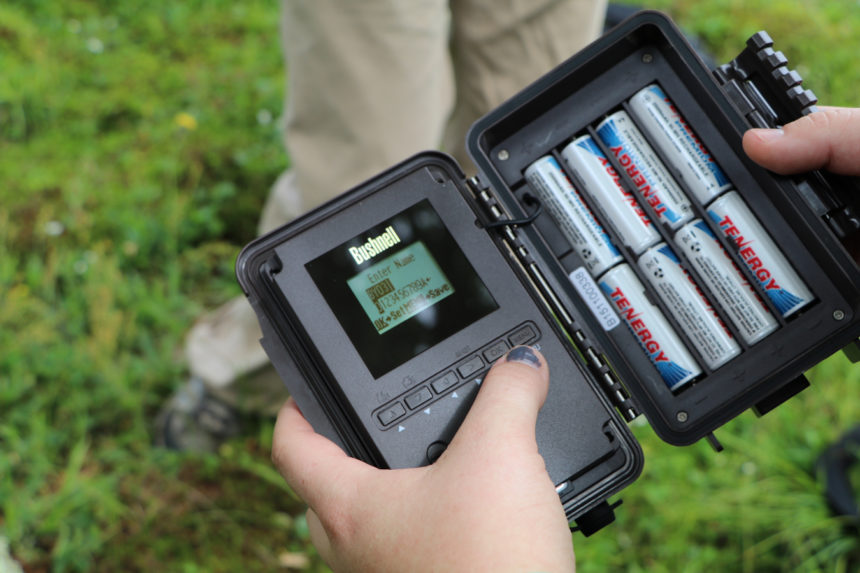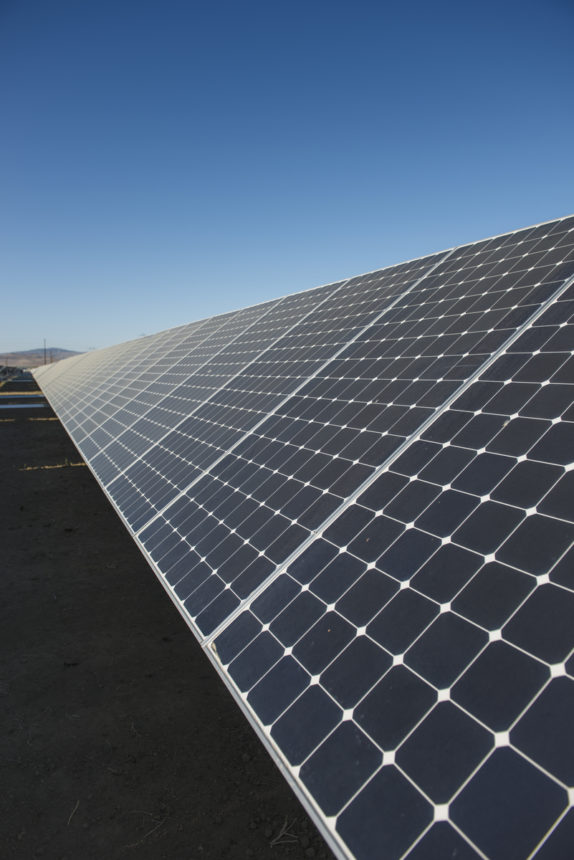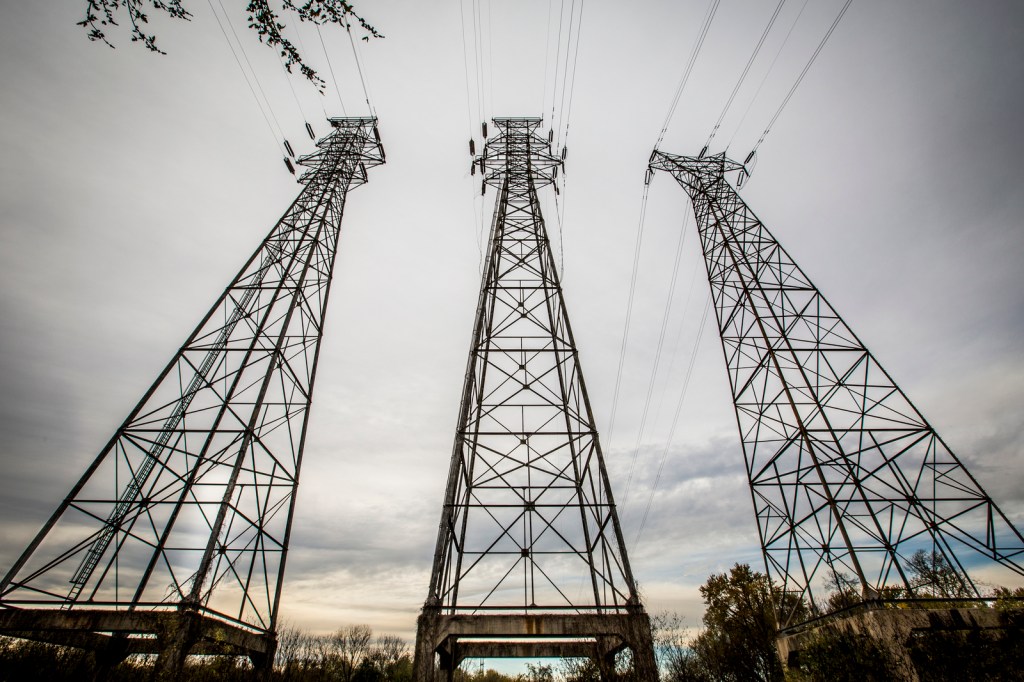Update on the NatureNet Science Fellows: Won-Hee Ryu
A new paper by Conservancy NatureNet Science Fellow Won-Hee Ryu may ultimately help scientists overcome one of the most intractable technological obstacles to wholesale adoption of clean energy: the development of technologies capable of storing that energy at larger and larger scales.
Today rechargeable lithium-ion batteries power our lives, from cars and cameras to computers and cell phones. But when it comes to storing energy at the grid level—which is what the world needs to accelerate the switch to renewable sources—lithium-ion batteries are impractical.
For starters, lithium, like most things that are scarce, is expensive. Cost alone would prohibit the use of lithium-ion batteries for storage at large scales regardless of other challenges. But on top of expense, there’s the problem of their energy storage to weight ratio. When manufactured at a size large enough to hold a charge that could give electric cars mileage capacities comparable to gasoline engines, for example, the weight of a lithium-ion battery quickly overcomes its performance.
Performance Matters
And when it comes to viable energy storage technology performance, practicality, capacity and efficiency are fundamental requirements — especially at the scales necessary to efficiently power our computers, cars, and phones, and ultimately, the world’s energy grids.
Scientists working to solve this problem are interested in the possibilities of lithium-oxygen batteries as a potential source for next-generation energy storage — especially for cars, computers and, possibly, homes — because they could store two to three times as much energy (by weight) as current lithium-ion batteries.

Unfortunately, lithium-oxygen batteries have some major challenges to overcome. They still perform sluggishly and cycle times are as yet too low to be practical. An additional problem that underscores everything else is how difficult it is for scientists to study the intricate chemical reactions happening at the nanoscale within the batteries.
A Fresh Pathway
Which brings us back to NatureNet Science Fellow Won-Hee Ryu and his colleagues in Andre Taylor’s Transformative Materials and Devices Laboratory at Yale University. Their latest paper, published in ACS NanoLetters, describes a “fresh pathway” that both improves lithium-oxygen battery performance, and – perhaps even more significantly — makes it possible for scientists to gain better visibility to the intricate nanoscale chemical reactions at the heart of lithium-oxygen battery technology.
A key – some might say THE key — problem with lithium-oxygen batteries is the way oxides build up on the electrodes that host the catalysts. Buried electrodes = no reaction = dead battery.
In a previous paper (published last year in ACS NanoLetters), Ryu and his colleagues had some success overcoming this problem by inserting a nanoscale polyacrylonitrile (PAN) membrane as a layer within the battery. It spread out the catalyst sites and successfully restricted the build up of oxides during discharge.
The PAN layer improved cycle life and the experimental battery Ryu and his team developed recharged 60 times without losing storage capacity. Previous lithium-air batteries without the membrane started to lose efficiency after 37 charging cycles.
That success led the scientists to experiment with different membrane materials. In the newest paper, they replaced the PAN membrane with one made of anodic aluminum oxide (AAO) with dispersed palladium nanoparticles as catalytic sites.
According to Taylor, “PAN is a polymer, so it could break down if you’re doing recycling. But anodic aluminum oxide is a very stable oxide and it doesn’t lead to any unexpected side reactions. It works better and gives a better perspective on what’s happening electrochemically in the process.”
Because the AAO membranes are brittle, scientists can cross-section them without destroying the form and structure – the morphology – of the lithium-oxides. Essentially, AAO enabled researchers to dissect the framework and explore how oxidation is possible at long distances – as much as 20 micrometers – from the electrode.
Energy Storage and Climate Change
The AAO membrane not only improved again on lithium-oxygen battery efficiency — by mitigating the burial of the electrodes — but also offers scientists an entirely new way to see what’s happening and examine the chemical components of the discharge products and catalytic sites. Researchers consider this a promising breakthrough and are planning to test the AAO membrane with different types of catalysts in continuing efforts to perfect lithium-oxygen technology in the important quest to develop the next-generation of energy storage.

In the end, lithium-oxygen batteries may not be the solution — and any technology that relies on lithium is unlikely to ever be practical at the grid level — but this work is part of the path to whatever the solution will eventually be. Ryu’s work during his fellowship has also included promising research into other potential lithium-ion replacement technologies, specifically sodium-ion batteries, which could be viable for large-scale storage.
The value of his work and the work of all the NatureNet Science Fellows continues to show that investing in research and development in engineering, chemistry, materials science and physics is an investment in conservation science because it is an investment in developing the future-forward technologies — especially around clean energy — the world needs to halt, mitigate and adapt to climate change.
NatureNet Science Fellow Won-Hee Ryu completed his NatureNet Science Fellowship at Yale University in 2016, and is now an assistant professor of chemical and biological engineering at Sookmyung Women’s University in Seoul, South Korea.




Cool article on new battery tech. I was wondering about an energy source that happens all over the planet. That is lighting. In some mountain tops lightning strikes very often and if that energy source was collected by a tower and distributed via a network of cables at the ground to a series of capacitors that leaked down into the latest and best batteries for storage. This is just an idea that might work on a very local scale depending on the number of batteries that are used. I don’t know but has anyone ever looked at that possibility?